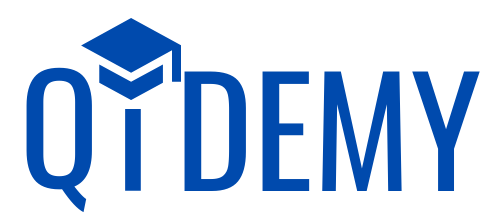In today’s fast-paced business world, it’s more important than ever to continuously improve processes and increase efficiency. One popular method for achieving these goals is through the implementation of Kaizen, a Japanese term that means “continuous improvement.”
Kaizen is not just a process improvement strategy, it’s a philosophy that emphasizes the importance of making small, incremental changes to processes and systems over time.
By focusing on continuous improvement, organizations can increase efficiency, reduce waste, and improve quality, ultimately leading to increased customer satisfaction and profitability.
In this blog post, we’ll take a closer look at the steps to implementing Kaizen in your organization. By following these steps, you can create a culture of continuous improvement and achieve long-term success. Let’s get started!
Table of Contents
Step 1: Establish a Kaizen Team
Implementing Kaizen requires a dedicated team that is committed to the continuous improvement process. Here are some important considerations for establishing your Kaizen team:
A. Importance of having a dedicated team for Kaizen implementation
- The Kaizen team should be made up of individuals who are passionate about process improvement and committed to the success of the organization.
- A dedicated team can provide the necessary focus and resources to implement Kaizen effectively and sustainably.
B. Roles and responsibilities of the team members
- The Kaizen team should have a clear understanding of their roles and responsibilities within the team.
- Team members should be selected based on their expertise and ability to contribute to the continuous improvement process.
C. Training and development of the team members
- Team members should receive adequate training and development opportunities to ensure they have the necessary skills and knowledge to implement Kaizen effectively.
- Training should cover the principles of Kaizen, data analysis, and problem-solving methodologies, among other areas.
By establishing a dedicated Kaizen team with clear roles and responsibilities and providing them with adequate training and development opportunities, you can lay the foundation for a successful Kaizen implementation. In the next step, we’ll take a look at how to identify improvement opportunities.
Step 2: Identify Improvement Opportunities
Before you can implement Kaizen, you need to identify the areas in your organization where improvement is needed. Here are some important considerations for identifying improvement opportunities:
A. Conducting a thorough assessment of the organization’s current state
- This can be done through various methods such as process mapping, value stream mapping, and data analysis.
- A thorough assessment can help you identify inefficiencies, bottlenecks, and waste in your organization’s processes.
B. Gathering feedback and suggestions from employees
- Employees who are directly involved in the processes can provide valuable insights and suggestions for improvement.
- Encourage open communication and feedback channels to gather employee suggestions and ideas.
C. Prioritizing improvement opportunities based on impact and feasibility
- Not all improvement opportunities are equal in terms of impact and feasibility.
- Prioritize improvement opportunities based on their potential impact on the organization and their feasibility in terms of resources required and implementation complexity.

By identifying improvement opportunities through a thorough assessment of the organization, gathering feedback and suggestions from employees, and prioritizing opportunities based on impact and feasibility, you can focus your Kaizen efforts on areas that will have the greatest impact on the organization. In the next step, we’ll take a look at how to plan and implement changes.
Step 3: Plan and Implement Changes
Once you have identified improvement opportunities, the next step is to develop a plan to implement changes. Here are some important considerations for planning and implementing changes:
A. Developing a detailed action plan for improvement opportunities
- This includes defining the scope of the improvement opportunity, identifying the root cause of the problem, and developing a detailed plan for addressing the issue.
- The plan should include specific actions, responsibilities, timelines, and success metrics.
B. Assigning responsibilities and timelines for implementation
- Each improvement opportunity should have a clear owner who is responsible for implementing the plan.
- Assigning responsibilities and timelines helps ensure accountability and progress tracking.
C. Ensuring effective communication and collaboration between team members and stakeholders
- Effective communication is critical for ensuring that everyone is aligned on the plan and their responsibilities.
- Collaboration between team members and stakeholders can help identify and address issues as they arise.
By developing a detailed action plan, assigning responsibilities and timelines, and ensuring effective communication and collaboration, you can increase the likelihood of successful implementation of Kaizen changes. In the next step, we’ll take a look at how to monitor and evaluate progress.

Step 4: Monitor and Evaluate Progress
Once you have implemented Kaizen changes, it’s important to monitor progress and evaluate the effectiveness of the changes. Here are some important considerations for monitoring and evaluating progress:
A. Establishing a system to track progress and measure success
- This can include metrics such as cycle time, defect rates, and customer satisfaction.
- A system for tracking progress helps you identify whether the changes are having the desired effect.
B. Regularly reviewing and analyzing data to identify areas for further improvement
- Data analysis is critical for identifying areas where further improvement is needed.
- Regularly reviewing data can help you identify trends, patterns, and issues that require attention.
C. Encouraging continuous feedback and learning to sustain improvement efforts
- Continuous feedback and learning are essential for sustaining improvement efforts over time.
- Encourage employees to provide feedback and share their observations, which can help identify areas for improvement and generate new improvement ideas.
By establishing a system to track progress and measure success, regularly reviewing and analyzing data, and encouraging continuous feedback and learning, you can ensure that your Kaizen efforts are effective and sustainable over the long term. In the next section, we’ll summarize the key takeaways from the steps to implementing Kaizen.
Step 5: Celebrate Successes and Continuously Improve
Implementing Kaizen is an ongoing process, and it’s important to continuously improve and celebrate successes along the way. Here are some important considerations for celebrating successes and continuously improving:
A. Recognizing and rewarding achievements and successes
- Celebrating successes can help boost morale and encourage continued improvement efforts.
- Recognize and reward employees who have contributed to the success of Kaizen initiatives.
B. Encouraging a culture of continuous improvement
- Continuous improvement should be a core value and mindset in the organization.
- Encourage employees to identify opportunities for improvement and provide feedback to help drive continued improvement efforts.
C. Continuously reviewing and updating processes to ensure sustained success
- It’s important to regularly review processes and identify areas for improvement.
- Update processes as needed to ensure that they remain effective and aligned with organizational goals.
By recognizing and rewarding achievements and successes, encouraging a culture of continuous improvement, and continuously reviewing and updating processes, you can ensure sustained success and continuous improvement. In the next section, we’ll summarize the key takeaways from the steps to implementing Kaizen.
Real Example for Kaizen Implementation Process
Step 1: Establish a Kaizen Team
| Team Member | Department | Role |
|---|---|---|
| John | Production | Team Leader |
| Sarah | Quality Control | Team Member |
| David | Human Resources | Team Member |
| Lisa | Production | Team Member |
| Mark | Quality Control | Team Member |
| Emily | Human Resources | Team Member |
Step 2: Identify Improvement Opportunities
The team conducted a survey of employees and analyzed production data to identify opportunities for improvement. They used an impact vs. effort matrix to prioritize opportunities.
| Opportunity | Impact | Effort |
|---|---|---|
| Reduce Production Waste | High | Low |
| Improve Quality Control Process | High | High |
| Streamline Inventory Management | Medium | Medium |
| Enhance Employee Training Program | Low | High |
Step 3: Plan and Implement Changes
The team developed a detailed action plan to reduce production waste.
| Task | Responsible | Timeline |
|---|---|---|
| Implement new production process | John, Lisa | 2 weeks |
| Train employees on new process | Sarah | Ongoing |
| Reduce raw material used in production | David, Mark | 1 month |
Step 4: Monitor and Evaluate Progress
The team established a system to track progress and measure success.
| Metric | Target | Actual |
|---|---|---|
| Production waste reduction | 20% | Achieved |
| Employee satisfaction with new process | 80% | Achieved |
| Raw material usage reduction | 10% | Achieved |
Step 5: Celebrate Successes and Continuously Improve
The company celebrated the team’s achievements by recognizing individual team members and organizing a company-wide event. The company also committed to ongoing improvement efforts and encouraged employees to share ideas for further improvement.
Conclusion
In conclusion, implementing Kaizen can bring significant benefits to an organization, including increased efficiency, improved quality, and enhanced employee engagement. Here are some key takeaways from the steps to implementing Kaizen:
- Step 1: Establish a Kaizen team to lead the initiative.
- Step 2: Identify improvement opportunities through assessment and feedback.
- Step 3: Plan and implement changes by developing a detailed action plan, assigning responsibilities, and ensuring effective communication and collaboration.
- Step 4: Monitor and evaluate progress by establishing a system to track progress, regularly reviewing and analyzing data, and encouraging continuous feedback and learning.
- Step 5: Celebrate successes and continuously improve by recognizing and rewarding achievements, encouraging a culture of continuous improvement, and continuously reviewing and updating processes.
It’s important to note that ongoing commitment to Kaizen is crucial for sustained success. This includes maintaining a focus on continuous improvement, encouraging employee involvement and feedback, and ensuring that processes are regularly reviewed and updated.
By following these steps and committing to ongoing improvement efforts, organizations can realize the benefits of Kaizen and achieve sustained success.
Additional Resources
Here are some online resources that could be helpful to readers interested in learning more about Kaizen implementation:
- Lean Enterprise Institute – Kaizen: https://www.lean.org/lexicon/kaizen
The Lean Enterprise Institute provides a comprehensive overview of Kaizen, including its history, principles, and benefits. The site also includes resources for implementing Kaizen in various industries and organizations.
- Kaizen Institute – Kaizen Implementation: https://kaizen.com/kaizen-implementation/
The Kaizen Institute offers a detailed guide to implementing Kaizen, including information on establishing a Kaizen culture, identifying improvement opportunities, and developing an action plan.
- ASQ – Kaizen: https://asq.org/quality-resources/kaizen
The American Society for Quality (ASQ) provides a collection of articles and resources on Kaizen, including case studies, best practices, and tools for implementation.
- Six Sigma Daily – 5 Steps to Kaizen Implementation: https://www.sixsigmadaily.com/5-steps-to-kaizen-implementation/
This article from Six Sigma Daily provides a concise overview of the five steps to Kaizen implementation, including tips for establishing a Kaizen team and implementing changes.
- All About Lean – Kaizen: https://www.allaboutlean.com/kaizen/
All About Lean provides a detailed explanation of Kaizen, including its history, principles, and tools. The site also includes case studies and examples of Kaizen implementation in various industries.
These resources can provide readers with additional information, tools, and insights to help them successfully implement Kaizen in their organizations.




